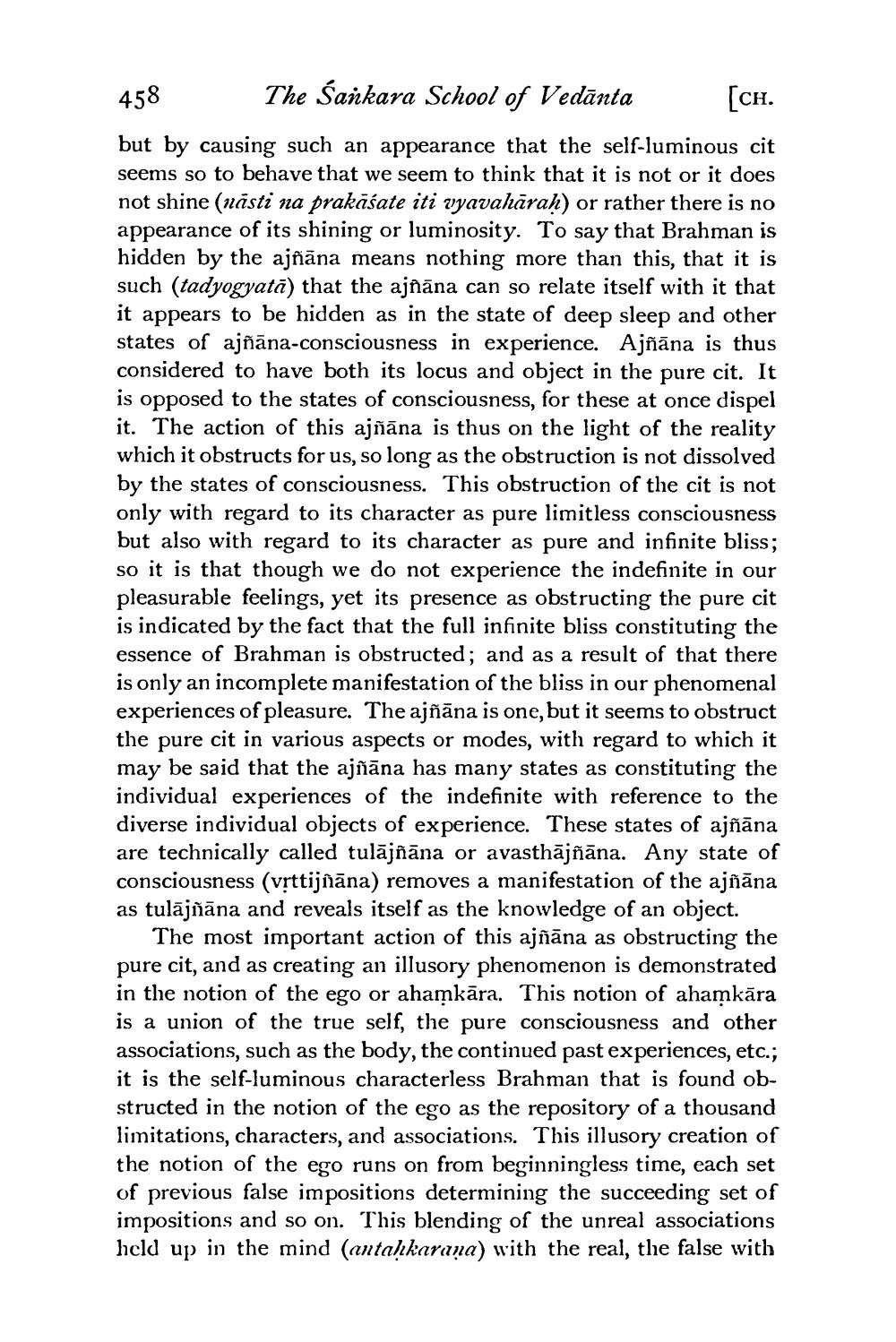________________
458
The Sankara School of Vedanta
[CH.
but by causing such an appearance that the self-luminous cit seems so to behave that we seem to think that it is not or it does not shine (nāsti na prakāśate iti vyavahāraḥ) or rather there is no appearance of its shining or luminosity. To say that Brahman is hidden by the ajñāna means nothing more than this, that it is such (tadyogyatā) that the ajñāna can so relate itself with it that it appears to be hidden as in the state of deep sleep and other states of ajñāna-consciousness in experience. Ajñāna is thus considered to have both its locus and object in the pure cit. It is opposed to the states of consciousness, for these at once dispel it. The action of this ajñāna is thus on the light of the reality which it obstructs for us, so long as the obstruction is not dissolved by the states of consciousness. This obstruction of the cit is not only with regard to its character as pure limitless consciousness but also with regard to its character as pure and infinite bliss; so it is that though we do not experience the indefinite in our pleasurable feelings, yet its presence as obstructing the pure cit is indicated by the fact that the full infinite bliss constituting the essence of Brahman is obstructed; and as a result of that there is only an incomplete manifestation of the bliss in our phenomenal experiences of pleasure. The ajñāna is one, but it seems to obstruct the pure cit in various aspects or modes, with regard to which it may be said that the ajñāna has many states as constituting the individual experiences of the indefinite with reference to the diverse individual objects of experience. These states of ajñāna are technically called tulājñāna or avasthājñāna. Any state of consciousness (vṛttijñāna) removes a manifestation of the ajñāna as tulājñāna and reveals itself as the knowledge of an object.
The most important action of this ajñāna as obstructing the pure cit, and as creating an illusory phenomenon is demonstrated in the notion of the ego or ahamkāra. This notion of ahamkāra is a union of the true self, the pure consciousness and other associations, such as the body, the continued past experiences, etc.; it is the self-luminous characterless Brahman that is found obstructed in the notion of the ego as the repository of a thousand limitations, characters, and associations. This illusory creation of the notion of the ego runs on from beginningless time, each set of previous false impositions determining the succeeding set of impositions and so on. This blending of the unreal associations held up in the mind (antaḥkaraṇa) with the real, the false with




